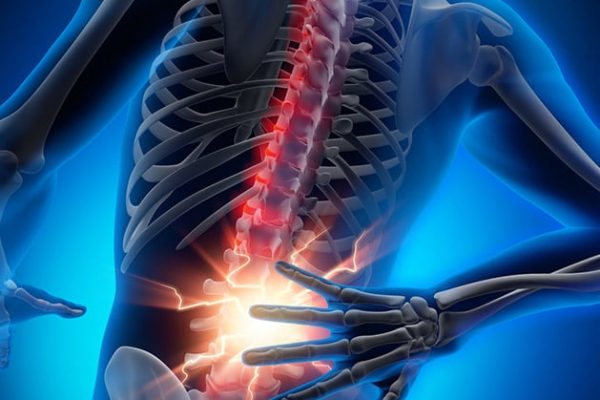
Lower back pain is a common ailment affecting millions of people worldwide. Whether it’s a dull ache or a sharp pain, the discomfort can significantly impact your daily activities and quality of life. One of the most frequently asked questions by those suffering from lower back pain is whether to rest or exercise. Understanding the best approach to manage lower back pain can be crucial in promoting recovery and preventing future episodes. At CARESPACE, we aim to provide comprehensive, multidisciplinary care to help you make informed decisions about your health. This article explores the benefits and considerations of both rest and exercise in managing lower back pain and highlights how CARESPACE’s integrated approach can support your recovery journey.
The Importance of Understanding Lower Back Pain
Before diving into whether to rest or exercise, it’s essential to understand the nature of your lower back pain. Lower back pain can be acute, lasting a few days to weeks, or chronic, persisting for more than three months. The causes can vary widely, from muscle strains and ligament sprains to herniated discs, arthritis, and structural issues in the spine. Identifying the underlying cause is critical for determining the most appropriate treatment plan.
The Case for Rest
Resting is often the initial response to lower back pain, especially if the pain is severe. Rest can help reduce inflammation and prevent further injury in the early stages. However, prolonged rest can lead to muscle stiffness, weakness, and reduced flexibility, which may exacerbate the pain and delay recovery.
When to Rest
Rest is beneficial when:
1. The pain is acute and severe.
2. There is a specific injury or trauma.
3. Movement exacerbates the pain significantly.
4. Advised by a healthcare professional.
In these cases, a short period of rest (usually 1-2 days) can be helpful. However, it’s crucial to avoid complete immobility. Gentle movements and stretching can help maintain some level of flexibility and prevent stiffness.
The Case for Exercise
Exercise, on the other hand, plays a crucial role in the long-term management of lower back pain. Regular physical activity can strengthen the muscles supporting the spine, improve flexibility, and enhance overall function. Exercise can also promote the release of endorphins, which are natural pain relievers.
Benefits of Exercise
1. Strengthening Muscles: Targeted exercises can strengthen the core muscles that support the spine, reducing the risk of future injuries.
2. Improving Flexibility: Stretching exercises can improve the flexibility of muscles and ligaments, reducing tension and pain.
3. Enhancing Mobility: Regular movement can prevent stiffness and improve overall mobility, making daily activities easier.
4. Promoting Healing: Exercise can increase blood flow to the affected area, promoting healing and reducing inflammation.
5. Mental Health Benefits: Physical activity can reduce stress and anxiety, which are often associated with chronic pain.
When to Exercise
Exercise is beneficial when:
1. The acute phase of pain has passed.
2. You can perform movements without significant discomfort.
3. Recommended by a healthcare professional.
It’s essential to start with gentle, low-impact exercises and gradually increase the intensity as your condition improves. Activities like walking, swimming, and yoga can be excellent options for maintaining physical activity without putting undue strain on the lower back.
How CARESPACE Can Help
At CARESPACE Health+Wellness, we understand that managing lower back pain requires a personalized and multidisciplinary approach. Our team of regulated health professionals, including physiotherapists and chiropractic doctors, work together to create tailored treatment plans that address the root causes of your pain and promote long-term recovery.
Physiotherapy for Lower Back Pain
Physiotherapists at CARESPACE specialize in assessing and treating musculoskeletal conditions, including lower back pain. They use a variety of techniques to help alleviate pain, improve function, and prevent recurrence.
1. Assessment and Diagnosis: Physiotherapists conduct a thorough assessment to identify the underlying cause of your lower back pain. This may include physical examinations, movement analysis, and reviewing your medical history.
2. Manual Treatments: Techniques such as joint mobilization, soft tissue massage, and myofascial release can help reduce pain and improve mobility.
3. Exercise Prescription: Physiotherapists design personalized exercise programs that focus on strengthening and stretching the muscles supporting the spine.
4. Education and Advice: Providing guidance on posture, ergonomics, and activity modification to prevent future episodes of lower back pain.
Chiropractic Care for Lower Back Pain
Chiropractic doctors in Kitchener and Waterloo at CARESPACE focus on diagnosing and treating disorders related to the spine, nervous system, and musculoskeletal system. They use hands-on techniques to alleviate pain and improve function.
1. Spinal Adjustments: Chiropractic adjustments involve applying controlled force to specific joints in the spine to improve alignment, reduce pain, and enhance mobility.
2. Soft Tissue Treatment: Techniques such as trigger point therapy and myofascial release can help relieve muscle tension and improve circulation.
3. Rehabilitation Exercises: Chiropractors may prescribe exercises to strengthen the core and improve spinal stability.
4. Lifestyle and Ergonomic Advice: Providing recommendations on posture, ergonomics, and lifestyle modifications to support long-term spine health.
A Collaborative Approach
At CARESPACE, our physiotherapists and chiropractic doctors collaborate closely to ensure a comprehensive and coordinated approach to your care. This multidisciplinary teamwork allows us to address all aspects of your lower back pain, from immediate pain relief to long-term prevention strategies.
Deciding whether to rest or exercise with lower back pain can be challenging. While rest can be beneficial in the short term, incorporating exercise into your routine is crucial for long-term management and prevention of future episodes. At CARESPACE Health+Wellness, we are committed to providing client-focused, evidence-based care to help you achieve your health goals. Our integrated team of physiotherapists and chiropractic doctors work together to create personalized treatment plans that address your specific needs and promote lasting recovery. If you are struggling with lower back pain, contact CARESPACE today to learn how we can help you on your journey to better health.




